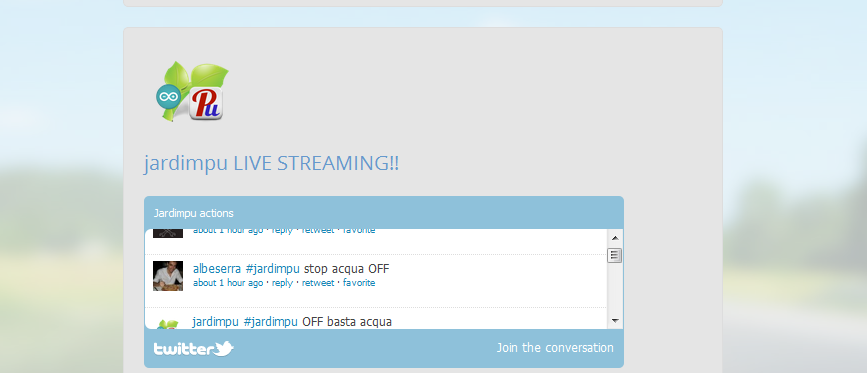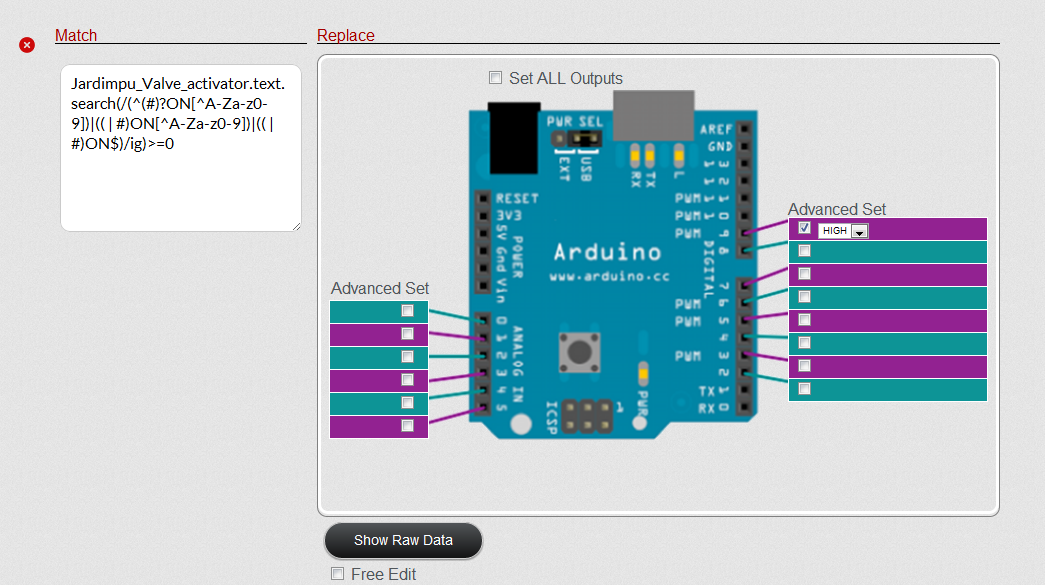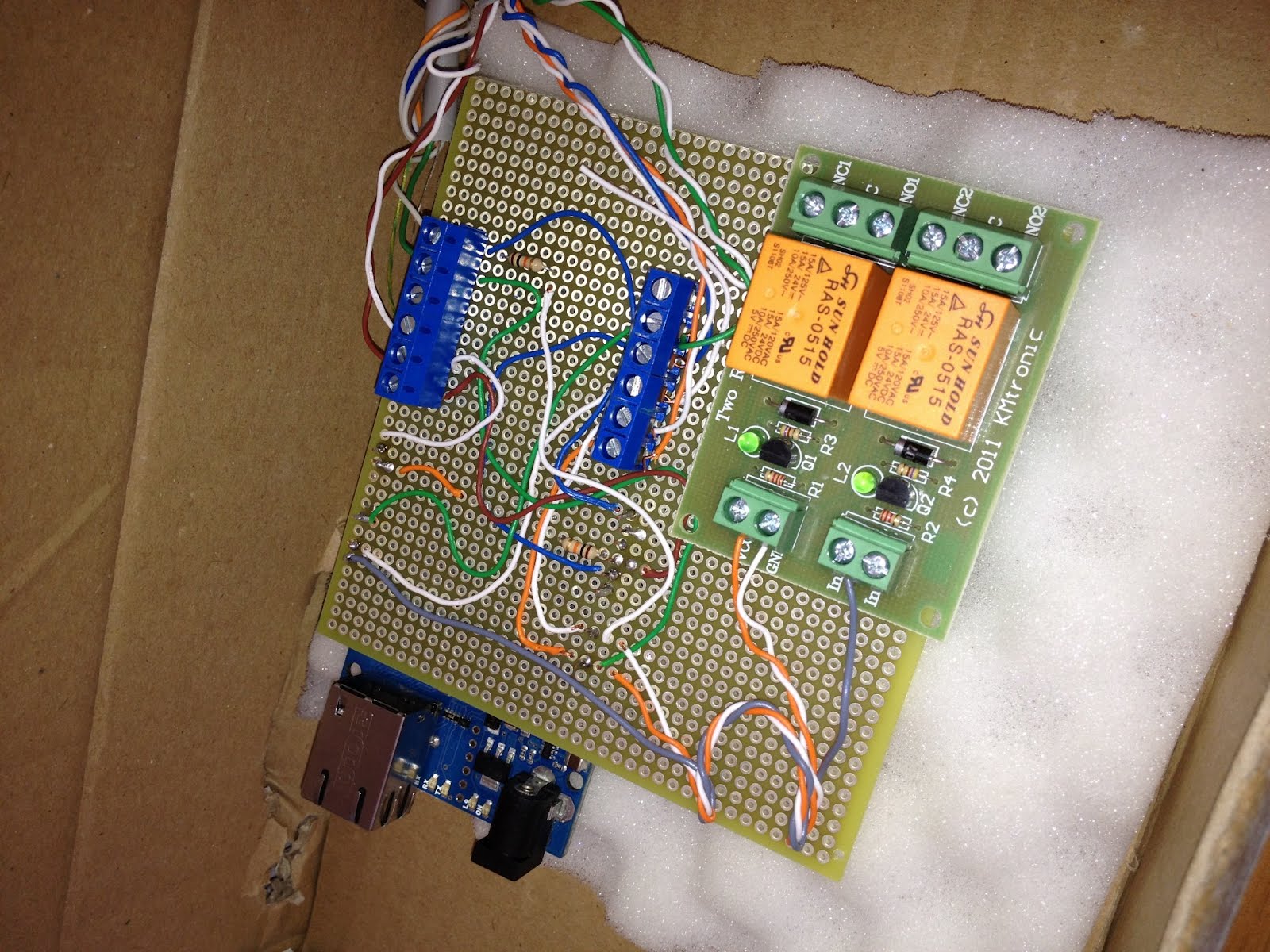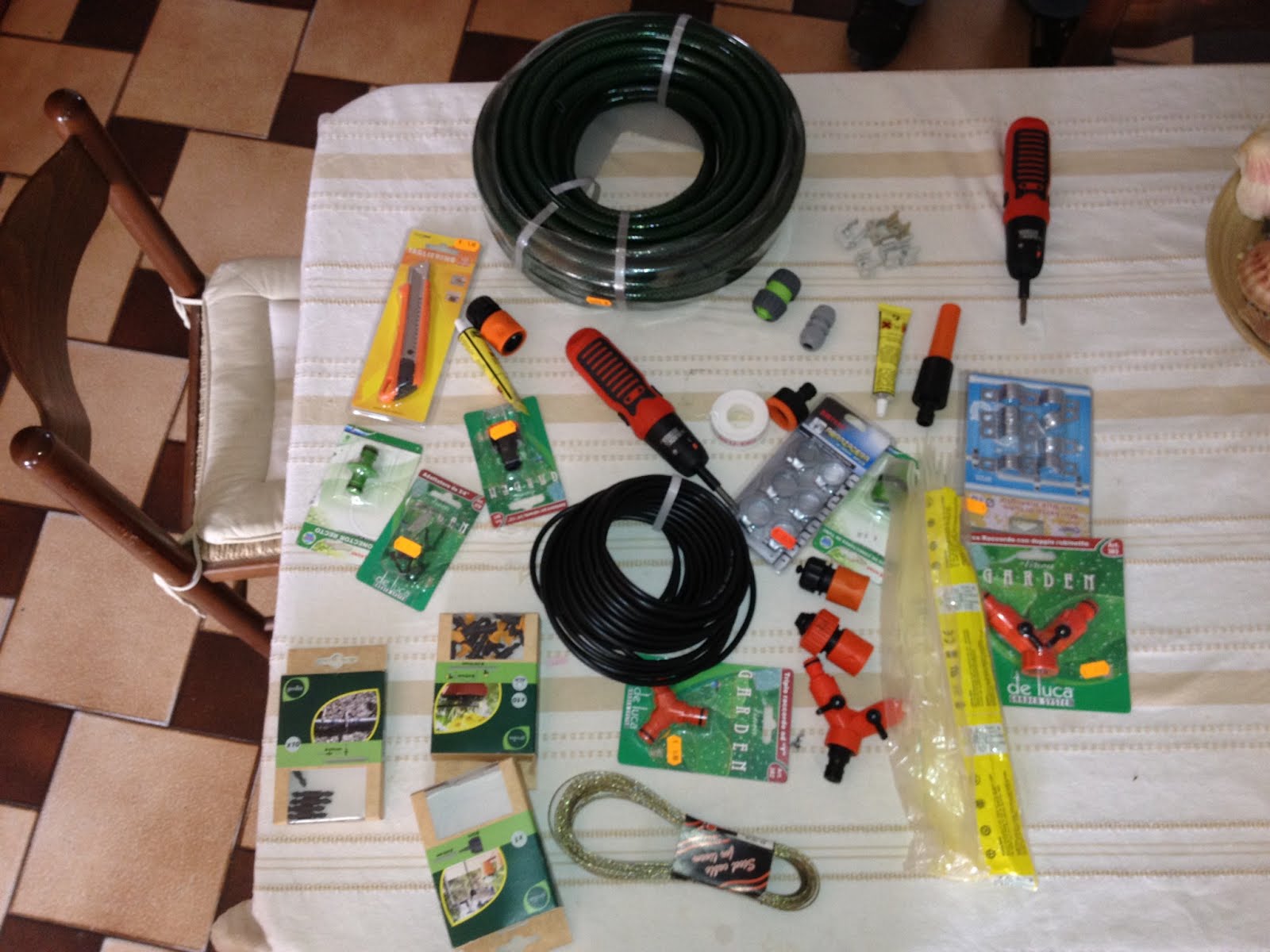0. What is it?
The word Jardimpu is a contraction of "Jardim" (Garden in Portuguese), "Arduino" and "Paraimpu". It 'a prototype of a drip irrigation system equipped with sensors, managed through the Web and "Social": it may be shared with other users.
1. The idea
About a year ago, knowing the potential of two very valuable tools as Arduino and Paraimpu, I thought to make an intelligent irrigation system and control of environmental parameters for my garden, in order to stay updated about the conditions of temperature and humidity, soil moisture, light conditions and to check the level of water in the some plant’s saucers (eg Dionaea muscipula).This system does not represent an absolute novelty in the field of sensors and monitoring of a garden, but since you can use it with a new tool like Paraimpu, for sharing data, irrigation and monitoring via an IP Cam, has made it much more interesting, innovative and (obviously) more "social". We can call this type of system: “social gardening”, which allows other people (authorized, for example our "friends" if we were talking about Facebook) to activate the drippers, to see plants in a live streaming and to control their parameters.
2.The realization
Two main tools: Arduino and Paraimpu.The automatic sprinkler connected with arduino is nothing new: Massimo Banzi proposed an example one year ago (search for “Giarduino” on google).
The main difference in Jardimpu is represented by the social aspect: the interaction with the sprinkler in the garden and data sharing between friends, and the ability to simultaneously connect through Paraimpu our "real garden" with other "virtual objects" such as twitter, google calendar, or other arduino devices and so on ...
Jardimpu Components:
- Arduino
- sensor temperature / humidity air
- soil moisture sensor
- an IP webcam
- a system of pipes, pumps and drippers
- an electrovalve for irrigation
- cables and other accessories
3. Connection n.1: weather data
As already mentioned, the tool that allows us to publish the sensor data gathered with Arduino and connect them with "things of the web", tangible or virtual, is Paraimpu.
Paraimpu allows the creation of data collector objects, called SENSORS, and ACTUATORS. A Paraimpu CONNECTION is the combination of a sensor (as the data source) with an actuator (as the data destination).
At the moment, for Jardimpu I’ve created 3 connections.
The first concerns the weather data, like temperature, humidity and light conditions. The data looks (for example) like this:
{"dioneaPerc": 66.0, "tempDallas": 13.31, "lux": 81.0, "soilM1": 55.0, "Dionea": 165.0, "humidity": 65.0, "photocell "636.0," tempDHT ": 15.0," dp ": 8.47}
- dioneaPerc: the value is recorded by the homemade sensor on the carnivorous plant Dionea, as a percentage.
- tempDallas: the temperature recorded by the sensor temperature DS18B20
- lux: the amount of light registered by the light sensor
- SoilM1: soil moisture recorded by the humidity sensor, homemade built with 2 mines type HB
- humidity: humidity measured by the sensor dht11
- tempDHT: temperature measured by the sensor dht11
- dp: the dewpoint calculated on the Arduino sketch with the humidity and temperature.
Screenshot Paraimpu Sensor:
Data are in JSON format and sent to the Paraimpu Twitter actuator that displays a message. I created a Jardimpu twitter page (twitter.com / jardimpu) where followers can monitor the sensor data. They will see messages like the following:
Temperature: 13.31 ° C, Humidity: 65%, DewPoint: 8.47 ° C, Illum: 81 lx, Soilmoist: 55%
The connection:
For the sake of convenience, I created a public blog http://jardimpu.blogspot.it/, in which a section is updated with the latest tweets, so you can be acquainted about the current Jardimpu weather situation:
You can find a section with tweets "#jardimpu" and streaming live video over the garden which will be explained later.
4. Connection n. 2: monitoring Dionea (a Venus Flytrap)
This Paraimpu-connection allows me to control the level of water of the carnivorous plant Dionea Muscipula (the Venus Flytrap). The Venus Flytrapis a spectacular carnivorous plant found natively only in North and South Carolina. It “eats” insects and other tiny animals, after they are attracted, by closing of the trap. It 'a very special plant that needs special care:- grows only on peat moss with perlite
- needs a lot of sun
- needs to have a plant pot saucer in which the water must be always present, at least at a level of 2-3 cm. Only demineralized water.
This last point made me think that we can use a connection solely for the monitoring of its water level.
Being a very delicate plant, if in the plant pot saucer is not present at least 2 cm of water, even only for one day, it can suffer of serious irreparable damages.
The homemade sensor consists of 2 graphite leads HB immersed in the saucer’s water. Graphite leads are the end points of a circuit connected with Arduino and with a 10kOhm resistance. The operation is simple: if water is present, the circuit is closed and so there is a flow of current. If the water is not present, the circuit is open, there is no passage of current and therefore the Dionaea needs water.
As you can see in the drawing, Paraimpu receives the data recorded by Arduino and generates a tweet that notifies me when there is a low water level, or when the level is extremely low and the plant needs water, immediately.
Screenshot of the Paraimpu connection with mappings:
Yes, you can also think of constantly monitoring the water level, but you must remember that the conductivity depends not only on the amount of water, but also on the substances dissolved in it. Talking about demineralized water, theoretically, its conductivity should lead to zero. This does not happen because the water will dissolve many substances to both the contact with the pot and the contact with the air. The best way to keep under control the water level is definitely through the use of a precision scale.
However, in our case, the graphite leads are more than adequate because they will "alert" the system when there is no water in the plant pot saucer.
Following the example of the Thotel Cagliari (http://www.youtube.com/watch?v=6LuutBhG9nU) we activate the valve (and so the drippers) with a tweet containing the hashtag #jardimpu followed by ON.The deactivation will be made with #jardimpu OFF.
The activation state is monitored with a streaming video through the blog, all the authorized users can activate the valve depending on the plant’s need of water and the current weather.


The circuit built with Arduino is composed by a relay. When the relay is switched on (voltage value HIGH) closes the circuit and allows the passage of current by activating the electrovalve and the drippers. If the circuit is open (voltage LOW), the valve stops the water flow and drippers stop irrigating. The Arduino pin that activates the relay is the digital pin 9.
The following Paraimpu screenshot is a connection mapping that shows an example for the relay activation:

This is the Paraimpu connection:

Then, the connection is composed by a Paraimpu Sensor that captures all the twitter tweets containing the hashtag #jardimpu. The actuator activates the valve when the tweet contains the word ON, otherwise disables it if the message contains the word OFF.
Arduino circuit and the relays (in orange) and
Screenshot of the Paraimpu connection with mappings:
Yes, you can also think of constantly monitoring the water level, but you must remember that the conductivity depends not only on the amount of water, but also on the substances dissolved in it. Talking about demineralized water, theoretically, its conductivity should lead to zero. This does not happen because the water will dissolve many substances to both the contact with the pot and the contact with the air. The best way to keep under control the water level is definitely through the use of a precision scale.
However, in our case, the graphite leads are more than adequate because they will "alert" the system when there is no water in the plant pot saucer.
5. Connection n.3: The command to activate the valve
The third Paraimpu connection is the most interesting. Thanks to this connection we can activate the drippers of the garden via the web, through a simple tweet.Following the example of the Thotel Cagliari (http://www.youtube.com/watch?v=6LuutBhG9nU) we activate the valve (and so the drippers) with a tweet containing the hashtag #jardimpu followed by ON.The deactivation will be made with #jardimpu OFF.
The activation state is monitored with a streaming video through the blog, all the authorized users can activate the valve depending on the plant’s need of water and the current weather.
The circuit built with Arduino is composed by a relay. When the relay is switched on (voltage value HIGH) closes the circuit and allows the passage of current by activating the electrovalve and the drippers. If the circuit is open (voltage LOW), the valve stops the water flow and drippers stop irrigating. The Arduino pin that activates the relay is the digital pin 9.
The following Paraimpu screenshot is a connection mapping that shows an example for the relay activation:
This is the Paraimpu connection:
Then, the connection is composed by a Paraimpu Sensor that captures all the twitter tweets containing the hashtag #jardimpu. The actuator activates the valve when the tweet contains the word ON, otherwise disables it if the message contains the word OFF.
6. Some photos
Arduino circuit and the relays (in orange) and
HB graphite leads and plaster of Paris used to create the soil moisture sensor.

Gardening stuff and the 24 volts electrovalve, connected to one of the arduino relays:

Gardening stuff and the 24 volts electrovalve, connected to one of the arduino relays:
